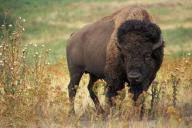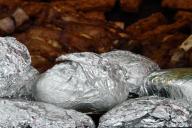When a big storm called Cyclone Idai hit Gorongosa National Park in Mozambique, scientists studied how it affected the animals in the park.
They used special cameras and GPS devices that they had already set up before the storm.
This helped them see minute-by-minute what happened during the cyclone and how the animals reacted.

How it was tested?
It was the first time anyone had been able to track how big animals respond to a natural disaster in real-time.
The researchers, led by Hallie Brown, watched the water rise and saw how different animals reacted in the hours, days, and weeks after the cyclone.
They used data from before, during, and after the storm to learn not just about this one event but also about what might happen in the future with more severe weather.
The study found that the size of the animals was crucial for survival.
Smaller animals, like the oribi, suffered more, with their population dropping by 50%.
On the other hand, larger animals, like elephants, survived without any fatalities.
The researchers also noticed that the smallest animals struggled not only to escape the flood but also to find enough food afterward.
The flood killed a lot of the grass and plants they eat, and smaller animals couldn't cope as well as larger ones.
The study suggests that wildlife managers should move smaller and more vulnerable animals to safer places before storms and provide extra food after storms to help them survive.
Why it's important
The study showed that these patterns were similar to what happened with lizards and spiders in the Bahamas during hurricanes.
Overall, the study provides valuable insights for managing wildlife during extreme weather events.













